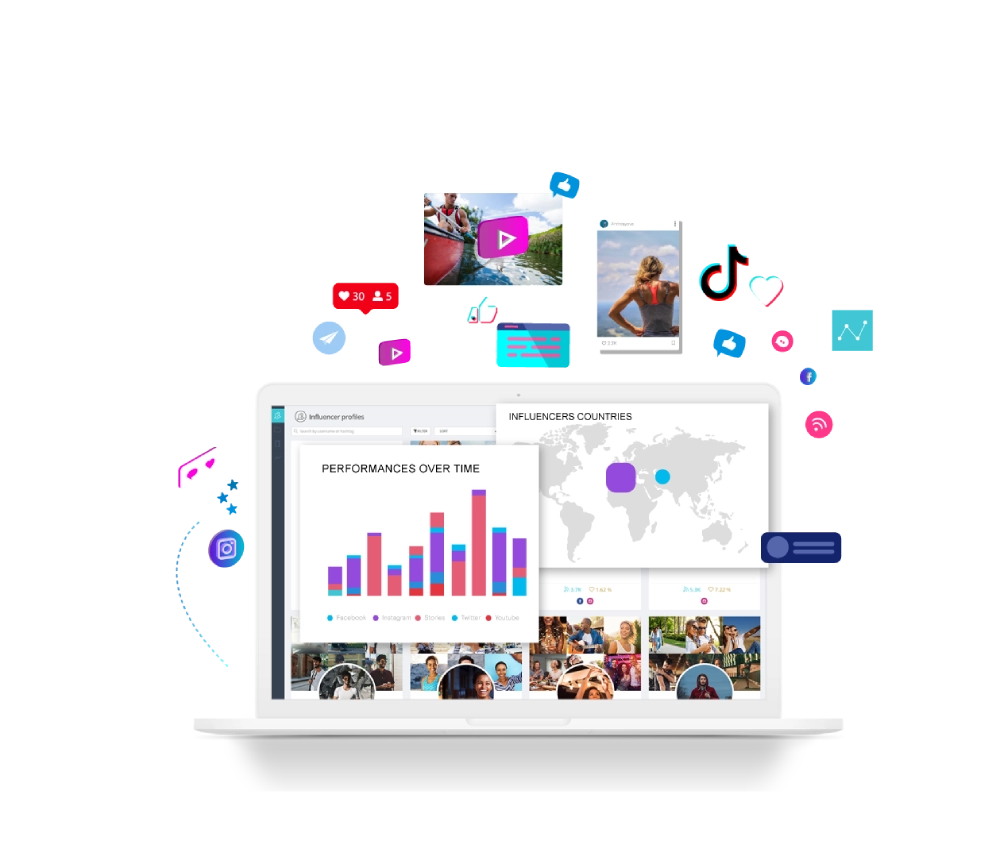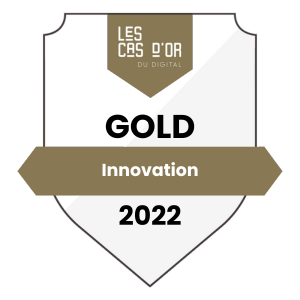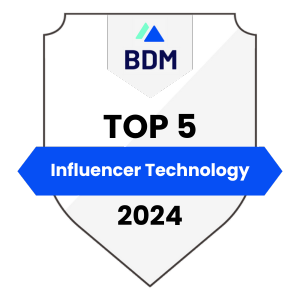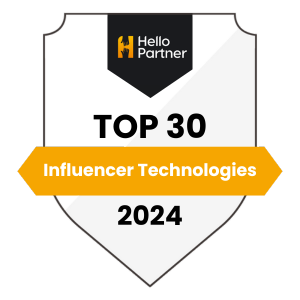How can you capitalize on your best creators? How can you avoid starting from scratch every time? And how can you better forecast (and justify) your influencer budgets?
For many brands, influencer marketing is still a short-term activation channel. Campaigns follow one another, but data is scattered, relationships are rarely nurtured, and performance is hard to model. Today, the most advanced brands are shifting to a more structured logic: influencer relationship management (IRM). The idea: stop managing just campaigns, start managing a long-term creator portfolio.
In this article, we explain how to implement a strong IRM strategy, and how a tool like Stellar can help you scale up your influencer marketing game to not only have quick wins, but become a creator powerhouse within your industry.
TL;DR: Multiplying collaborations without proper follow-up leads to loss: loss of efficiency, coherence, time, and budget. Influencer relationship management (IRM) means managing your creators as long-term partners, not one-off service providers.
A good IRM strategy is built on 4 pillars: centralizing information, choosing the right influencers, personalizing the relationship, and structuring your talent base. The result? Less friction, more impact, and a portfolio of influencers you can activate over the long term.
What is an IRM strategy?
IRM (Influencer Relationship Management) means considering influencers not as one-off providers, but as strategic partners. It’s about structuring and optimizing how you manage creator relationships at every stage: identification, onboarding, tracking, loyalty, and performance measurement. In other words, think about a CRM system that focuses on costumers, but translate it to the influencer marketing world, where creators are not just one-off assets, but ideally long-lasting, trustworthy partners for mutual benefits.
The goal: evolve your campaigns into a model that’s more efficient, more consistent, and more profitable over time. If this was not yet convincing enough, let’s share with you three strong arguments to go beyond short-term orientation and foster long-term creator relationships with IRM:
Stronger editorial alignment: a creator who regularly collaborates with you knows your tone, key messages, and products.
Less time spent sourcing: by working again with already-approved profiles, you reduce time spent on scouting, vetting, and onboarding.
Higher engagement rates: formats co-created with invested creators spark more interest and reactions, thanks to smoother brand integration into their universe.
Long-term vision for your activations: you can track each creator’s performance over time, identify the most effective profiles, and manage your influencer budgets more clearly.
4 pillars of strong influencer relationship management
1. Centralize information to improve efficiency
When influencer briefs are shared by email, approvals via WhatsApp, and timelines live in Excel, things quickly get messy. Delays, duplicates, missing info… relationships suffer, and campaign oversight does too.
To bring structure, it’s crucial to create a single collaborative workspace that gathers briefs, timelines, delivered content, feedback, and approvals.
This gives everyone on the team a clear picture of where each collaboration stands, even in case of handovers or campaign changes.
➡️ With tools like Stellar, you can centralize all your collaborations (with the Project module), with clear tracking of deadlines, briefs, deliverables, and budgets. This allows you and your team to manage all your campaigns seamlessly and to focus on what really matters, instead of losing time on infinite Spreadsheets.
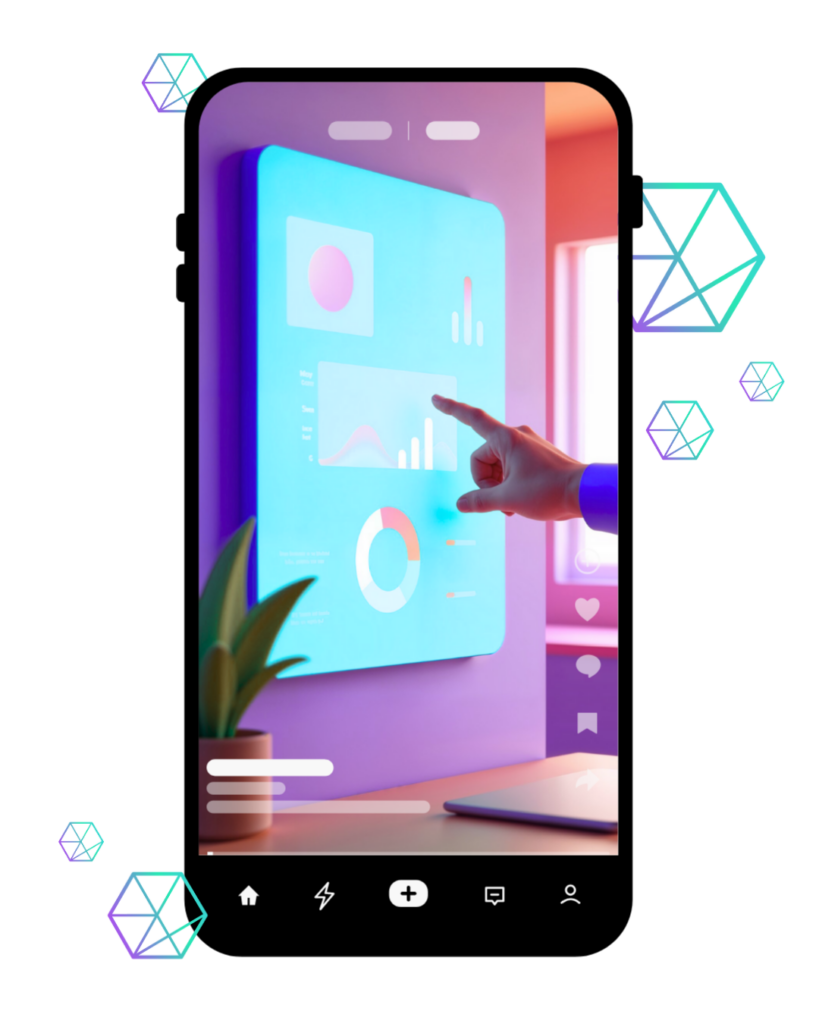
2. Choose the right profiles from the start

A successful relationship always starts with the right match. And influencer marketing is just like a wedding, and a marathon at the same time: you have to make sure you choose the right partner, and know that you’ll be working together on the long run, through thick and thin.
Working with the right influencers means knowing what you’re looking for (awareness, conversion, image), and going beyond numbers to find creators who truly resonate with your target audience.
That means analyzing:
Their editorial line (authenticity, tone consistency, production quality)
Their audience makeup (age, interests, location…)
Their collaboration history (direct competitors? Complementary brands? Yourself, three years ago?)
Their real engagement (not just reach)
➡️ On Stellar, you can find your perfect match through the Discovery module and its Catalog: its influencer database lets you search and filter more than 100 million profiles worldwide. Use precise criteria and find your long-term partner according to audience demographics, interests, past performance, etc.
What’s more: you can find creators who already love and talk about you with our social listening tool, or discover similar profiles to the ones you love already with our Lookalike feature!
3. Personalize the relationship to boost engagement
Creators are constantly approached. What grabs their attention is a brand that knows their universe, values their ideas, and maintains the connection beyond just campaigns.
Good influencer relationship management means having a deep understanding of the creator: their interests, stances, tone, and most active periods… The finer your knowledge, the more natural and effective the relationship becomes.
➡️ For example, Stellar’s Influencers module Stellar gives you a complete view of each profile: values, editorial style, audience, collaboration history, similar creators… All the data you need to make sure the creator and your brand are a fit, and to personalize your messages, briefs, and even project proposals.

4. Organize your creators to stay agile

The more your influencer strategy grows, the more visibility you need over the profiles you activate regularly.
Which creators were used for which campaigns? Which topics are already well covered? How well did this influencer perform last time? What shoe size should I send that influencer for our next collaboration?
Structuring your talent pool helps you and your team spread out your efforts, avoid redundancy, and respond faster to new creative, business, or product needs.
➡️ To make sure you keep working with the right creators, you can use Stellar’s comments and sentiments analysis. This feature lets you view how the audience responded to your influencers’ posts through data: did they use positive or negative emotions? Were there recurring doubts, questions towards your product?
You can then keep your influencers organized according to performance and make better, informed choices for your next campaigns.
In practice: how to leverage IRM for your marketing
Set a clear strategy and centralize your efforts
Long-term goals first: do you want awareness, conversion, brand love? From there, stop scattering your data across tools: centralize briefs, feedback, and performance tracking so you actually see what works over time.
Choose the right creators (and know your base)
Identify who your recurring creators are, what they bring to the table, and who’s worth building with. Quality beats volume every time: the better the match, the easier it is to scale and hit your goals.
Personalize and nurture the relationship
Creators aren’t just content suppliers. Keep it human: tailored briefs, shared ideas, early access, or even co-creation opportunities. A little care goes a long way to spark engagement and loyalty.
Measure, organize, and optimize over time
Track performance like a portfolio, not a one-off campaign. See who drives results, spot gaps, and refine your talent base. The more structured your approach, the easier it is to move fast and stay consistent.
How Stellar helps you structure your IRM strategy
With its 4 complementary modules (Discovery, Influencers, Projects, Reports), Stellar lets you professionalize every step of IRM:
Identify the right profiles, thanks to a highly precise search engine (audience, affinities, performance) and similar profile suggestions
Understand your creators better, with enriched profiles (values, tone, content, past collaborations, fake follower detection…)
Manage each collaboration in a dedicated space, including briefs, deliverables, exchanges, product sends, promo codes, etc.
Measure long-term performance, by creator, project or campaign, with detailed performance analysis (engagement, audience sentiments, traffic, sales, EMV…)
Forecast and optimize your budgets, with ROI simulation tools and performance projections

